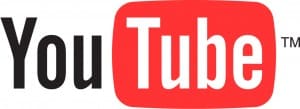 YouTube has a serious copyright problem.
YouTube has a serious copyright problem.
However, it’s not necessarily the problem that many think it is. While YouTube is certainly home to a wide variety of of illegal and pirated material, the problem actually runs much deeper.
Simply put, YouTube is trying to present itself as a place to upload and promote original content. To do that, it needs to both severely limit the amount of infringing content while encouraging the posting of new, legitimate and creative works. However, YouTube’s current copyright system seems to struggle with both.
Though, most of the time, the system seems to work fairly well, there are enough exceptions, including highly-publicized ones, to make it clear that the system is far from perfect and that, if creatives are going to have trust in YouTube as a partner and ally.
However, fixing the system isn’t going to be easy and it may require YouTube to rethink its service and how it approaches copyrighted works, both those created for YouTube and the ones uploaded to it illegally.
The Uploader Dilemma
 Nearly every person who uploads content to YoUTube uses copyrighted material at some point. Whether it’s clips of video, music, images or even just reading someone else’s words, most YouTube users incorporate at least some copyrighted content from others.
Nearly every person who uploads content to YoUTube uses copyrighted material at some point. Whether it’s clips of video, music, images or even just reading someone else’s words, most YouTube users incorporate at least some copyrighted content from others.
Most of the time, that use is legitimate and most of the time it doesn’t cause a problem. However, for the creator, there are many pitfalls that a video can fall into even if it is legitimate.
First, there is the issue of ContentID matches. ContentID is YouTube’s system for automatically matching content uploaded to the service with a database of known material. Matched content can be removed, monetized by a third party, limited to viewing in only certain countries or simply tracked.
However, ContentID matches are far from perfect. They can be triggered on very short clips, such as in reviews, or they sometimes be triggered by nothing at all, seemingly flagging unrelated videos.
Though YouTube overhauled the system a year ago, it can be very difficult to appeal false ContentID matches, especially for unverified users, and false matches still take place.
Then there is the issue of monetization. YouTube will often block monetization due to ContentID claims but YouTube also declines to approve many videos for monetization on copyright grounds without such claims.
The policies, frankly, are hit and miss and many people, myself included, report having videos denied monetization though others almost exactly like it were approved. Going through a channel with a large number of uploads, especially a review channel, it’s often the case that the video manager list is pot-marked with videos denied monetization, unavailable in certain countries or, in some cases, removed.
This makes it difficult for legitimate creators on YouTube to be confident that the videos they create and upload will stay online and be available for them to monetize, regardless of how legitimate the content is.
That makes many, understandably, wary of YouTube and its copyright rules.
The Copyright Holder Dilemma
One might be willing to forgive YouTube’s copyright issues if it succeeded in keeping infringing material off of the service. However, that does not appear to be the case, at least not universally.
While it’s clear that YouTube is not the haven for infringing video content that it was in its infancy, the same YouTube Viacom is suing over, infringing content can still easily be found on the service, including full movies.
Even worse, some infringers are actually using the ContentID system to their advantage, to protest legitimate copyright notices and keep infringing material online. In the case linked in the article, the movie is available for legitimate (paid) rental on YouTube and has an official trailer.
In short, even those who have partnered with YouTube to distribute films are not safe.
Though YouTube’s efforts have certainly kept a lot of pirated content off the site, pushing it to far scuzzier streaming sites, it’s far from complete and many clear infringements remain.
The Crux of the Problem
For YouTube, the problem is simple. The current system doesn’t do an effective job of ensuring that legitimate content is safe on the service and also doesn’t do an effective job at preventing infringing material from taking up home.
Some of this comes from the nature of the Digital Millennium Copyright Act (DMCA), which provides hosts, like YouTube, with strong legal protections if they meet certain criteria, including the swift removal of allegedly infringing material.
This, for example, is the way that one video game studio was able to recently secureremoval of a critical review of their game. Though it has since been restored, the case is a reminder that, in the wrong hands, the DMCA can be abused.
However, those issues are present, and are fortunately very rare, at all sites that host content and follow the DMCA. ContentID and YouTube’s monetization policies are their own and, though it’s a commendable approach to try and be proactive on copyright issues, the approach has had only limited benefit to copyright holders and caused headaches for legitimate users.
While these problems are certainly understandable in the early days of the ContentID system, with so many years having passed, including over a year since the last overhaul, the fact that they remain is frustrating.
More frustrating is that neither of these issues appear to be problems on other video sharing sites, including Blip.TV. Legitimate content is almost never blocked and the site has almost no pirated content.
Blip does this largely through its focus on promoting web series and requiring users to obtain approval for their initial content before uploading. By verifying that users are working projects appropriate for the Blip community and the site’s vision, they prevent a great deal of problems in both directions.
However, for YouTube, this level of “hands on” is simply not practical. It has to lean more on its automated tools, as flawed as they are.
This problem is only likely to get worse for YouTube \ as the site grows, attracts more advertisers and becomes more of a mainstream destination for entertainment.
Bottom Line
If YouTube is going to be more than a destination for watching content and a key part of where producers and others go to post their content, it needs to solve its copyright problem, meaning that it is both a place original expression can thrive and a place pirated and infringing content is kept at bay.
While ContentID and YouTube’s rules have done a decent job in the majority of cases, it doesn’t really feel as if YouTube is building on stable ground in either direction.
YouTube has to do more to both protect fair use and legitimate commentary/criticism while doing more to prevent illegal material from taking home on the service. Those two ideas are not in opposition to one another, though many would let you believe they are.
It’s very possible to take steps to ensure that short, insignificant ContentID matches don’t trigger strong reactions while while ensuring videos with much larger matches are removed and stay removed. As we’ve talked about before, sites like YouTube are under no obligation to restore content after a counter-notice, especially if they feel the counternotice to be false or that the content violates their TOS.
While all of the cases I’ve described are certainly outliers, they are cases that YouTube needs to work to address. The outliers simply are not as rare as they could be and they still leave both legitimate up loaders and rightsholders with a bad taste in their mouths.